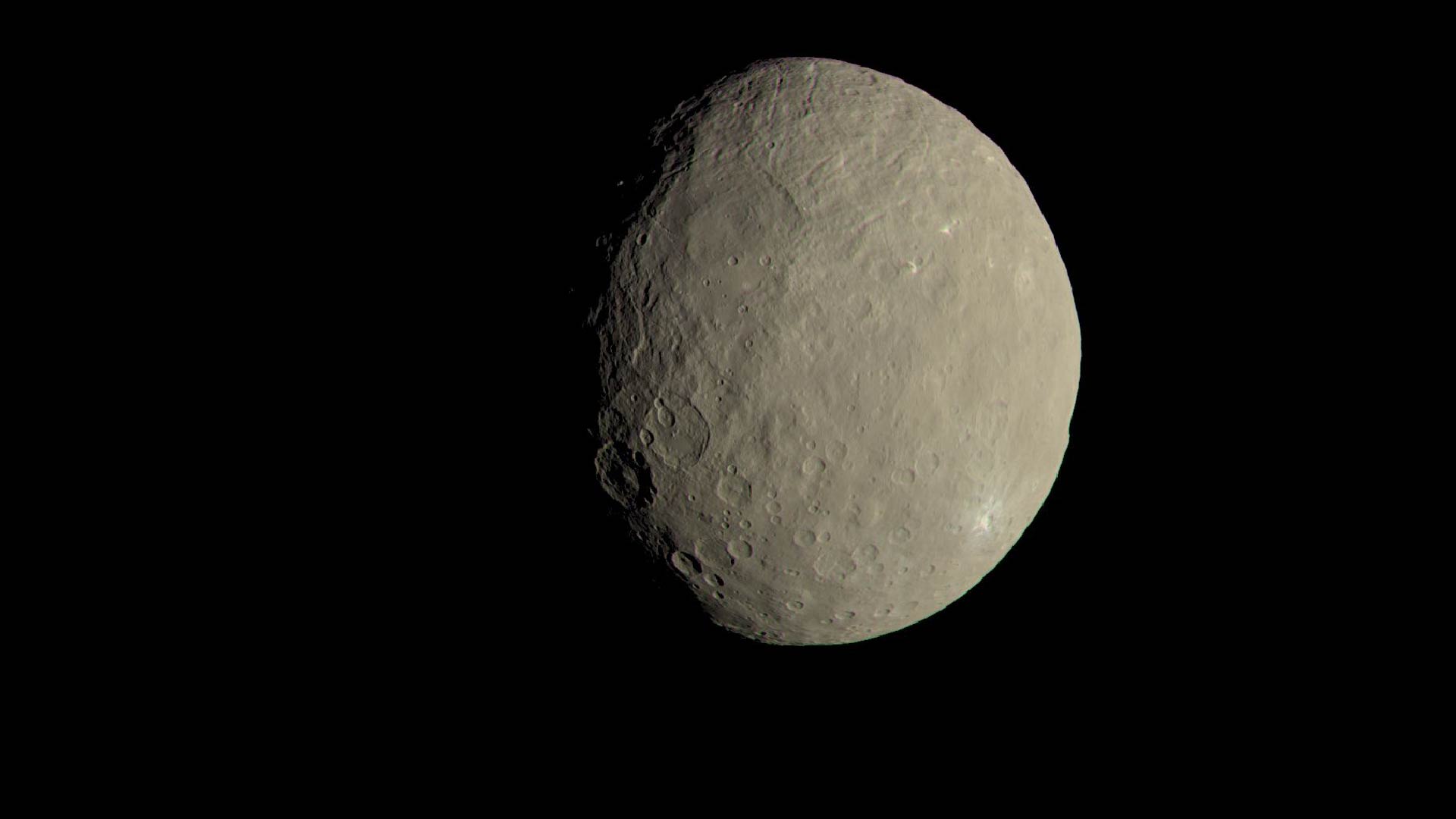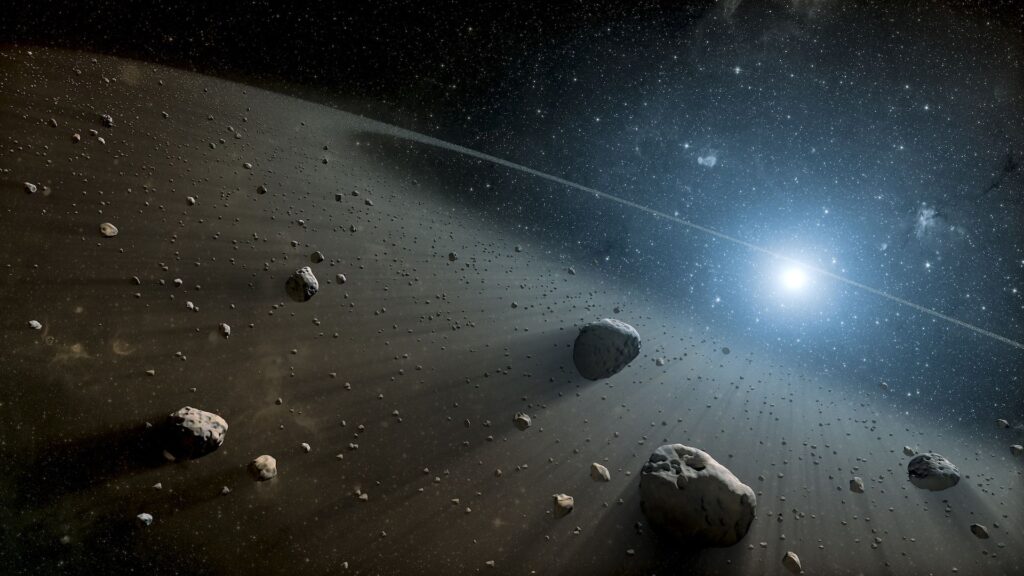The asteroid belt is found orbiting between Mars and Jupiter and is a vast collection of rocks that is thought to be a planet that never formed. When our Solar System formed 4.6 billion years ago, the material in this region should have coalesced into a planet, however, Jupiter’s gravitational influence prevented this from happening, stirring up the region so that collisions became destructive rather than constructive. What remains today contains only about 3% of the Moon’s mass scattered across millions of kilometres.
Jupiter’s influence didn’t stop there. Gravitational resonances, areas in space where the orbital periods of asteroids create regular interactions with Jupiter, Saturn, and even Mars, destabilise asteroid orbits, flinging fragments either toward the inner Solar System, where Earth resides, or outward toward Jupiter’s orbit. Asteroid fragments that don’t escape are ground down by mutual collisions into meteoritic dust.
A team of astronomers led by Julio Fernández from the Universidad de la República in Uruguay has calculated precisely how fast this depletion of asteroid belt material is progressing. They found that the asteroid belt is currently losing approximately 0.0088% of the portion of the asteroid belt that’s still participating in the ongoing collisions. That might sound like a small number but it represents a significant flow of material when considered over the immense timescales of Solar System evolution.
What makes this result particularly interesting is how that lost mass splits up between different fates. About 20% escapes as asteroids and meteoroids that occasionally cross Earth’s orbit and sometimes make rather dramatic entrances into our atmosphere as meteors. The remaining 80% is ground down through mutual collisions into meteoritic dust that feeds the faint glow that is the zodiacal dust that is visible in the night sky after sunset or before sunrise. The more familiar asteroids like Ceres, Vesta, and Pallas were excluded from the study since they have survived sufficiently long to no longer be participating in the ongoing depletion of material.

Understanding the asteroid belt’s mass loss is important and has a direct implication for Earth’s evolution. The large bodies that escape the belt don’t simply vanish into space, some eventually find their way to the inner Solar System, where they become potential impactors. The research suggests that if the current mass loss rate is extrapolated backward in time, the asteroid belt could have been about 50% more massive around 3.5 billion years ago, with a mass loss rate about twice as high. This correlates remarkably well with geological evidence from the Moon and Earth showing a declining bombardment rate over the past few billion years.
The asteroid belt, is often considered to be a permanent feature of our Solar System, but this research reveals it as a dynamic structure that’s been gradually losing material for billions of years. The glass spherule layers found in Earth’s rock strata reveal a more violent past when a more massive asteroid belt sent far more chunks of rock our way. Today, that bombardment has settled into a steady trickle as the belt continues its slow decline. Understanding this process not only helps us piece together the impact history that shaped Earth’s surface but it also provides crucial data for modeling the future risk from near Earth objects.
The original version of this article was published on Universe Today.
